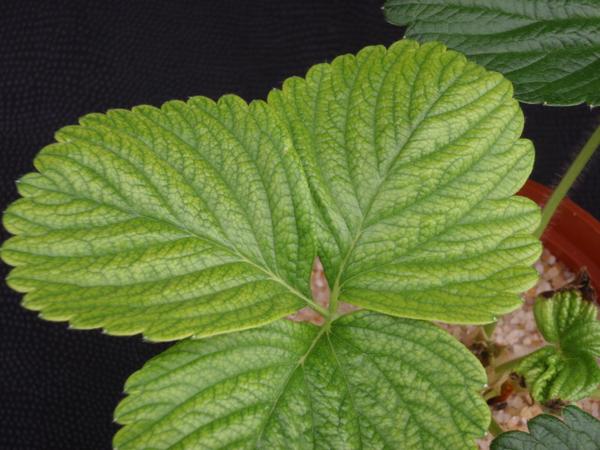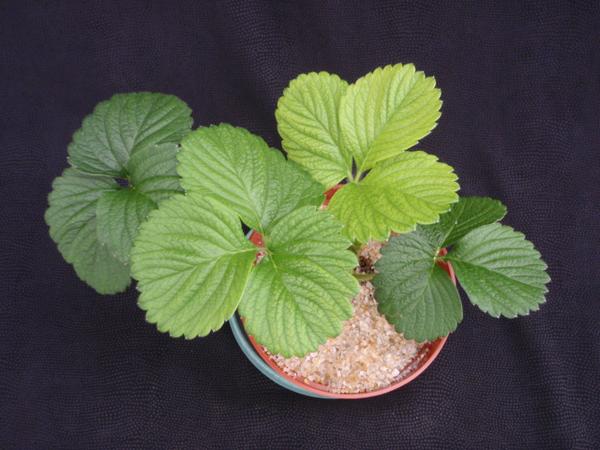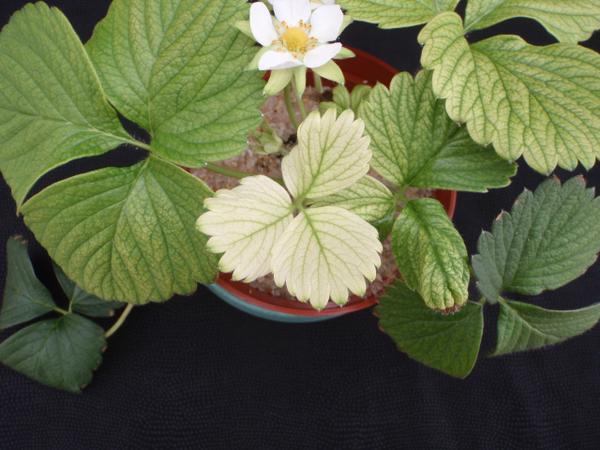Problem
Nutritional disorder – iron (Fe) deficiency
Symptoms
Upper leaves develop an interveinal chlorosis (yellowing between the veins). With advancing symptoms, the interveinal chlorotic coloration becomes more intense and expands to cover most of the leaf. Severe deficiencies result in bleached (white) leaves and over time necrotic dead spots can occur.
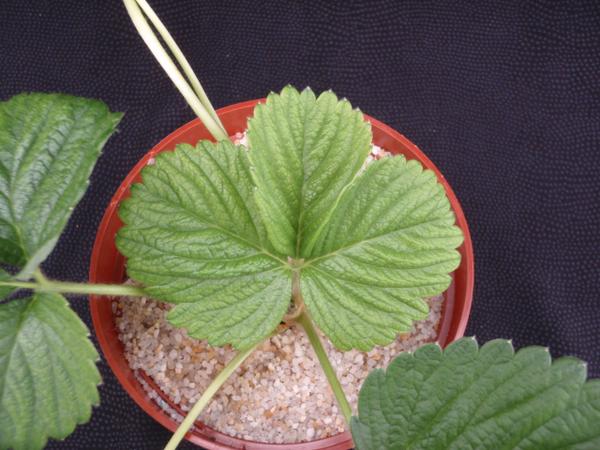
Initial symptoms of iron deficiency with a faint interveinal chlorosis of the younger leaves.
Brian E. Whipker CC BY 4.0
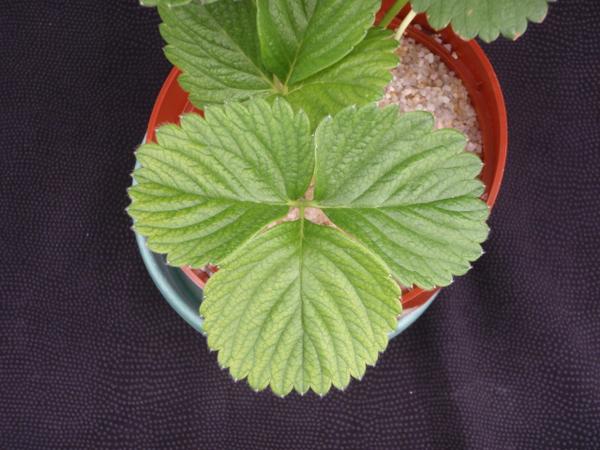
Intermediate symptoms of iron deficiency with more visible interveinal chlorosis of the younger leaves.
Brian E. Whipker CC BY 4.0

Advanced symptoms of iron deficiency with bright yellow interveinal areas.
Brian E. Whipker CC BY 4.0
Similar Problems
Symptoms of deficient iron can also occur when iron is limited (a true deficiency), when the soil pH is too high (which ties up iron and changes it into a form unavailable for plant uptake), with root rot (usually affected plants are scattered), plants in wet spots (in larger areas where water pools) or cold growing temperatures which limit root development.
Additional Information
Because symptoms of iron deficiency can occur due to many possible causes, it is important to determine the actual cause in order to correct the deficiency.
Diagnostic Tips
Take a soil sample to determine if elevated soil pH is the cause. Submit a leaf sample for nutrient analysis. The leaf tissue sufficiency range for iron in strawberries is between 50 to 300 ppm. Values lower than 40 ppm can lead to deficient conditions. Levels above 350 ppm are considered excessive.
Corrective Measures
Take a soil test to determine the soil pH level. Make adjustments based on those test results and the recommendations to add lime to increase the pH or sulfur to lower the pH. Applications of lime and sulfur will take some time to react. Therefore annual soil sampling should be taken to determine if the pH is starting to drift to the outer boundaries of the acceptable range, and corrective steps be implemented at that time.
Foliar sprays of chelated iron with rates based on recommendations from a soil and plant testing lab can be made for quick fixes. Avoid excessive applications of iron that can lead to toxicities.
Management
Strawberries are tolerant of a wide pH range from 5.5 to 7.0. Ideally the target soil pH should be between 6.0 to 6.5.
Useful Resources
Strawberry Tissue Analysis – North Carolina
Strawberry Fertiliser Guide – Australia
Strawberries (Western Oregon, west of Cascades) – Oregon
Fertilization of Strawberries in Florida – Florida
Funding Sources
Funding was provided in part by the National Sustainable Agriculture Program: Sustainable Strawberry Initiative and the following sources.
A thank you is also expressed to Kube Pak of Allentown, New Jersey for donating strawberry plants.
Publication date: April 7, 2014
N.C. Cooperative Extension prohibits discrimination and harassment regardless of age, color, disability, family and marital status, gender identity, national origin, political beliefs, race, religion, sex (including pregnancy), sexual orientation and veteran status.

